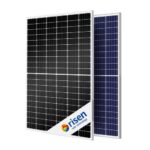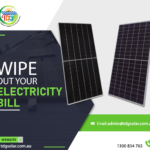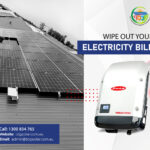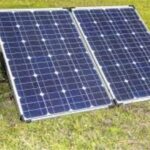Solar Panels Canning Vale - Solar panels on your Canning Vale, Western Australia house's roof can help you avoid rising electricity costs, raise the value of your home, and lessen your carbon footprint. Government rebates, subsidies, and grants encourage homeowners to transition to solar energy because it is clean and sustainable. Solar Panels Canning Vale can heat, power, and heat water in your home, allowing you to be completely self-sufficient. So, whether you want to enhance the energy efficiency of your home, save money, or help the environment, call TDG SOLAR.
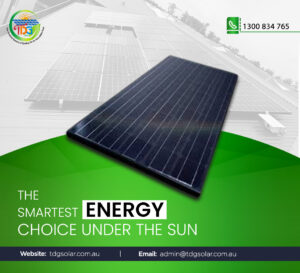
Table of Contents
How Do Solar Panels Work?
In a solar cell, photons clash with atoms and knock electrons loose. When conductors are attached to the positive and negative sides of a cell, an electrical circuit is formed. Electricity is generated when electrons pass across a circuit like this. A solar panel is made up of many cells, while a solar array is made up of several panels (modules). You'll create more electricity if you install more solar panels.
What size solar panel system do you need?
Every day, a normal home consumes about 20 kWh of energy. A 5kW solar system may meet the majority of the home's daytime electricity needs. Because solar panels are so inexpensive these days, it usually makes sense to install the largest system that your roof can hold and afford. Excess electricity can be used to charge a home storage battery or sold back to the grid for a profit via feed-in tariffs. A new system's average size is 6.6kW, however, larger systems (9 to 10kW or more) are becoming increasingly popular. A battery is frequently included in larger systems.
Cost of Solar Panels Canning Vale
A 5kW solar system may meet the majority of the home's daytime electricity needs. Because solar panels are so inexpensive these days, it usually makes sense to install the largest system that your roof can hold and afford. Excess electricity can be use to charge a home storage battery or sold back to the grid for a profit via feed-in tariffs. A new system's average size is 6.6kW, however, larger systems (9 to 10kW or more) are becoming increasingly popular. A battery is frequently include in larger systems.
Basic Steps in Solar Energy Generation and Transmission
- An electric field is form when the sun shines on the solar panels.
- The generated electricity is fed through a conductive wire at the panel's edge.
- The conductive cable transports the electricity to the inverter, where it is transform from DC to AC and utilized to power buildings.
- Another wire connects the inverter to the property's electric panel (also known as a breaker box), which distributes the AC electricity throughout the building as needed.
- Any electricity that is not used at the time of generation is fed into the utility electrical grid through the utility meter. The meter will run backward due to the flow of electricity, crediting your residence for a surplus generation.
Let's take a closer look at the science underlying the solar photovoltaic panel now that we have a better understanding of how solar electricity is generate and distribute.
Cost-efficient Solar Panels Canning Vale:
TDG SOLAR provides fully qualified, accredited, and licensed Solar Panels, Canning Vale. We use the greatest brands and the most up-to-date technology in our Solar Panels, Batteries, and Inverters, all of which are compliant with Australian Standards. TDG SOLAR is a solar PV system installation firm that is locally own and controll. We take pleasure in providing excellent customer service, knowledgeable advice, and competitive prices. Allow our friendly and professional staff to assist you in choosing the best Solar PV System for your home or business.
How Does Solar Energy Work?
Our sun is a natural reactor that acts as a nuclear power plant. It produces photons, which are microscopic energy packets that travel 93 million miles in 8.5 minutes from the sun to the Earth. Every hour, enough photons impact our globe to generate enough solar energy to meet the world's annual energy needs.
Solar Panels Canning Vale, Australia, photovoltaic power today accounts for barely 0.05 percent of total energy consumption. Our potential to harness the sun's abundant energy improves as solar technology advances and the cost of going solar drops.
How Does Weather Affect Solar Energy?
The amount of power produced by a solar system is affect by weather conditions, but not in the way you may imagine.
Of course, the best conditions for generating solar energy are clear, sunny days. In cold weather, solar panels, like other electronics, are more efficient than in hot weather. As a result, the panel may produce more electricity in the same amount of time. As the temperature rises, the panel produces less voltage and produces less electricity.
Solar panels are more efficient in cold weather, but they do not necessarily provide more electricity in the winter. The weather is usually brighter in the summer. Apart from the fact that there are fewer clouds, the sun is normally out for a longer time. Even though your solar panels are less effective in hot weather, they will almost surely produce more electricity in the summer than they will in the winter.
FAQ About Solar Panels Canning Vale
Q - What are the benefits of installing solar panels in Canning Vale?
A - Installing solar panels in Canning Vale, or anywhere else, offers several benefits:
- Reduced Electricity Bills
- Environmentally Friendly
- Energy Independence
- Government Incentives
- Increased Property Value
Q - How much do solar panels cost in Canning Vale?
A - Many variables, such as system size, brand, difficulty of installation, and incentives offered, can affect the price of solar panels. The average cost of a home solar panel system in Australia ranged from approximately AUD$3,000 to $10,000 per kilowatt (kW).
Q - Can I store excess solar energy?
A - By using batteries, you can store the excess energy produced by solar panels. Solar battery storage systems enable you to store excess electricity produced during the day and use it at night or during times of high energy demand. In times of blackouts, it can increase your energy independence and provide backup power.

